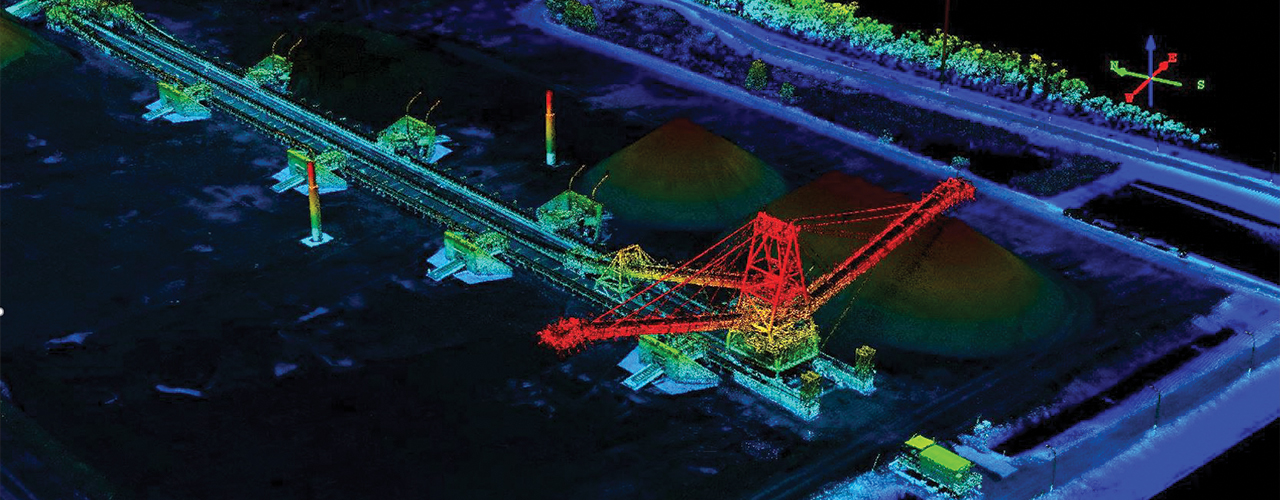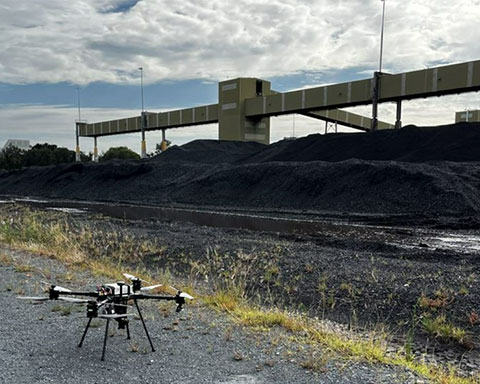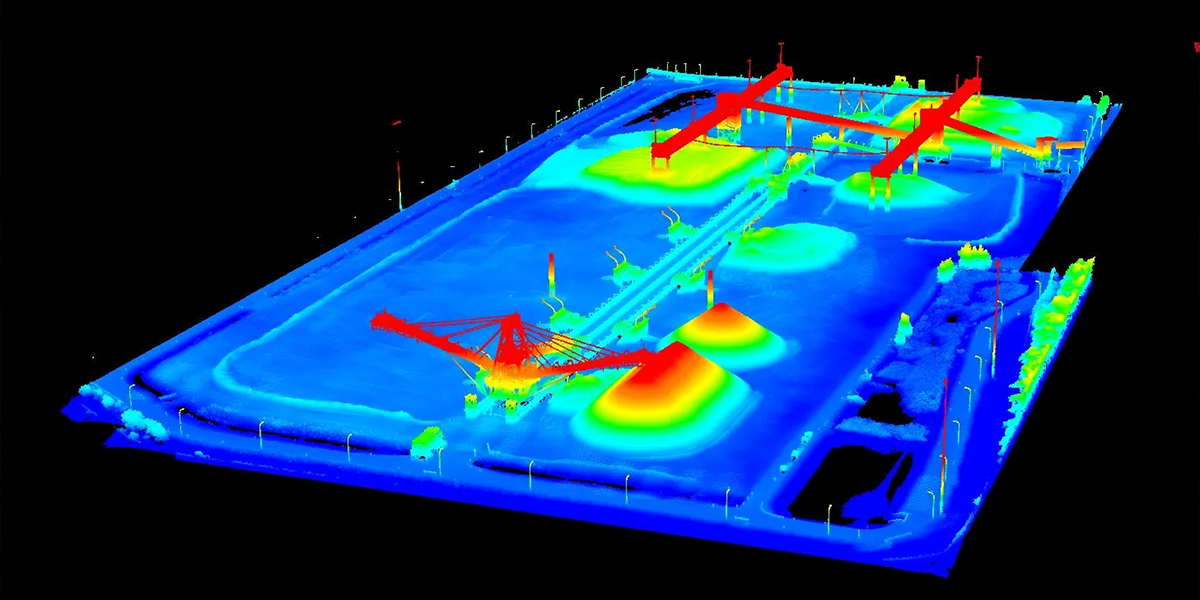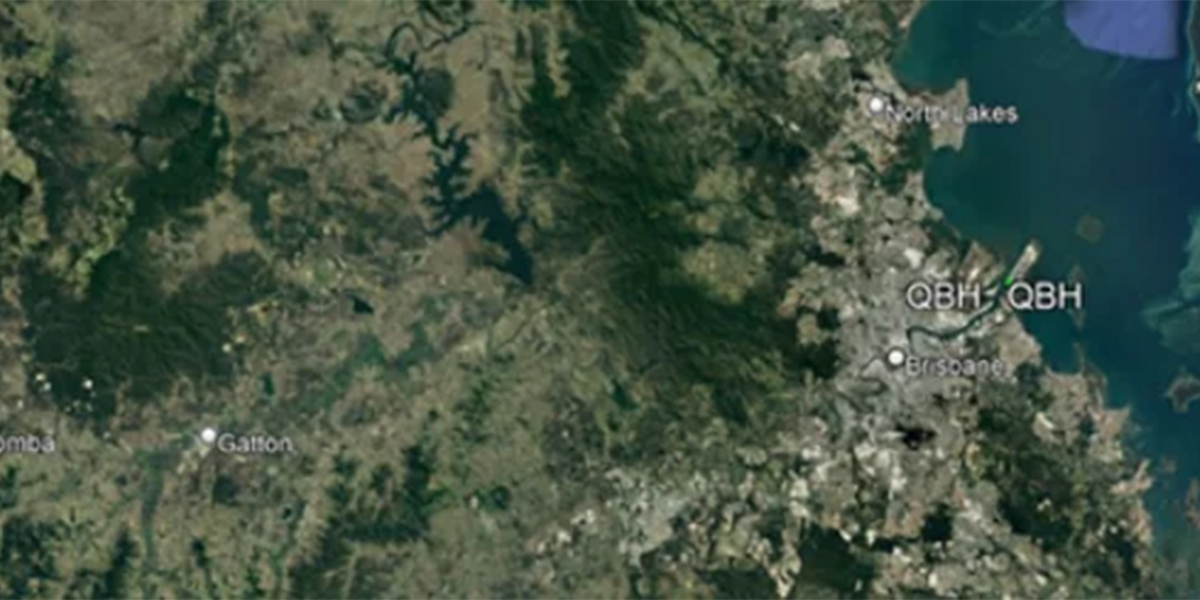Cross Hybrid Survey Solution for Mining

Background
Woolpert is commissioned to complete recurring survey work for a mining company based in South East Queensland. This client requires spatial survey information of three separate sites on a bi-annual basis. These sites are spread across a wide region and comprise of a mine, a coal handling processing plant, and a marine port.
The lidar and imagery datasets that we capture are used to calculate stockpile volumes as well as audit reporting. The timing of the survey capture and spatial information delivery is critical. Spatial capture and data delivery must be completed within three days, otherwise operational downtime occurs at a cost to our client.
Challenge
At a recent bi-annual survey project for this client, Woolpert acquired spatial data for the mine site and the coal handling processing plant using a lidar sensor in a fixed wing, piloted aircraft. The team used the Optech Galaxy PRIME sensor and attempted to capture the lidar and imagery data over the third site which was the Port of Brisbane on the same day; however, they were unsuccessful due to air traffic control (ATC) denying access to this air space.
Woolpert was under pressure to capture the required spatial data over the port in order to meet the client’s three-day deadline. Uncertainty plagued the project: could piloted aircraft be used because of multiple factors, there were unfavourable weather conditions forecased for the coming days, further airspace restrictions were likely, and the aircraft had scheduled maintenance for safety and compliance.
Solution
Woolpert deployed a newly acquired LiDARUSA Surveyor32 UAV system and Sony a6000 camera, with the Innoflight Scanlift800 platform for this port site. This solution was possible due to existing insurances and a pre-existing approval of the UAV/RPAS chief pilot to fly over the entire Port of Brisbane site, up to a maximum height of 40m AGL.

With a UAV, also called a remotely piloted aerial vehicle (RPAV), the team managed to capture lidar and imagery simultaneously with a mission time of just 20 minutes. The lidar and orthoimagery datasets were processed and volume calculations completed by our spatial analysts. The Woolpert project manager delivered the required spatial information to the client within the agreed-upon schedule.
Results
Our client was delighted with the outcome and is keen to continue with this quick, flexible, and accurate approach. Regularly seen in the mining sector, timing is one of the biggest factors at play. This method has allowed Woolpert to complete complex projects within the date-specific timing requirements.

